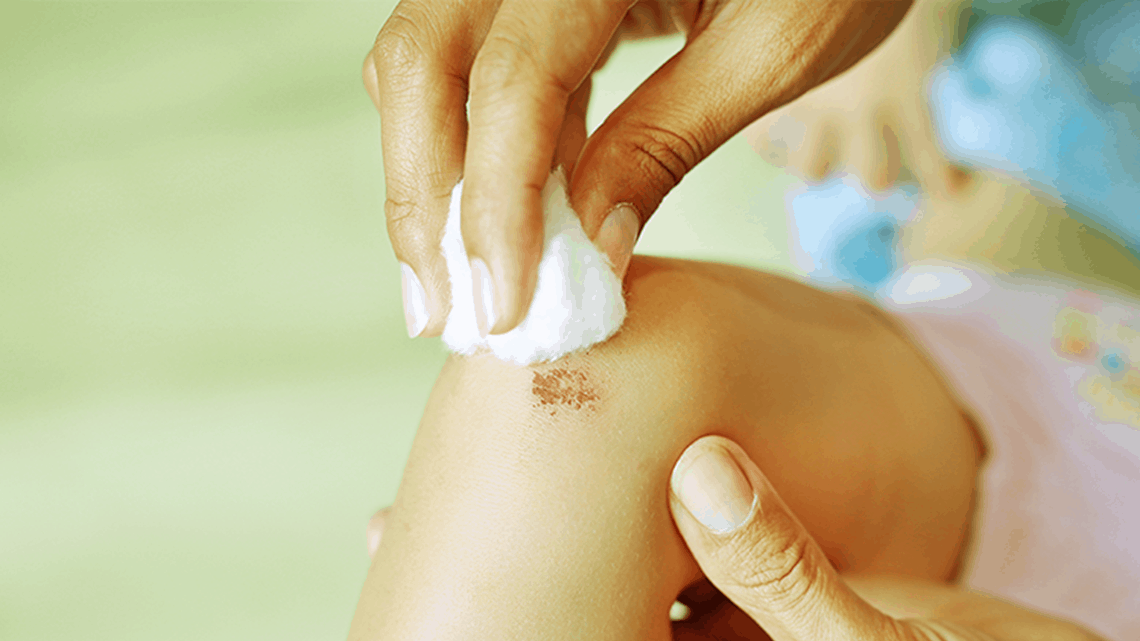The art of disinfecting wounds: what to and not to do
You sure do love a sunny day and so do your kids but out in the open, there is more danger. Danger to your health, safety, and hygiene. Getting wounded is a part of growing up but with proper care, pain and suffering can be minimized. While growing up, we get accustomed to getting hurt, wounded, and cuts and bruises. However, when we see the same happening with our kids, we sure get worried. To be honest, one should be worried because germs are everywhere and every bruise and cut is another gateway for them to gain entrance into the body.
A wound not tended is a gate that stands ajar and invites bacteria and other microbes to make home. Then, the colonization of these bacteria leads to infection and ultimately illness. If one is to act quickly and in time, all this trouble can be avoided. However, you should know that disinfecting a wound is not something that can be done in a New York minute, you need to know what to do and how to act. Applying just an antiseptic liquid is not enough. Along with knowing what to do, one should also have knowledge of what not to do. Making blunders while tending the wounded sometimes does more harm than good.
If one is choosing the right technique and making right use of the time, then it could mean a world of difference in between swift recovery and delayed healing. The outcome of wound is what comes into play while one is caring for wounds. So let’s discuss what should be done and what should be avoided.
What to do
One should know that germs are not only present on surfaces with which contact is made but on the objects that caused the wound. For example, abrasion caused by the tree branch could let bacteria in or the rusted nail that caused the cut could have bacteria on it. Therefore, it is surely a good idea to immediately clean the wound with a disinfecting solution made for wounds such as Dettol antiseptic disinfectant or you can use a mild solution such as one made of salt diluted in water. A mild soap diluted in water is also a good option or you can also use purified water to get the job done. If you see any debris that is stuck in the wound and if you have sterile tweezers available, pick out the debris with tweezers. If its lodged deep in the wound, then seek emergency care.
Applying pressure
Another thing to do in such times would be to apply pressure on the wound. Applying immediate pressure stops the bleeding and in some cases, approximates skin if it has not been torn or damaged. This promotes healing. Make sure that you are covering the wound with sterile gauze pads or a clean cloth. Keep applying the pressure for at least 5 minutes. This should slow down the bleeding, if it doesn’t then rush to emergency care.
Covering it up
When it comes to dealing with open wounds, make sure that you are covering the wound properly because moist wounds tend to recover quickly and scar less. You can also use medicated dressings such as films, hydrogels, and others. Even the best antiseptic liquid won’t do you any good if you are not following proper instructions. The best idea is to clean the wound and then cover it with the same skin that has slid by.
What not to do: Don’t ignore the wounds
When we talked about nipping it in the bud then we meant to act quickly and in time because that would stop the spread of bacteria, if any, promote healing and save you and your loved ones from a lot of trouble. So never ignore any cuts and wounds, hope for the best but prepare for the worst because ignoring the signs might not be helpful at all. If you see swelling around the affected region, heat, pus drainage, foul smell, or a wound that is not healing, seek medical care on time. We can’t say that there is a best antiseptic liquid for wounds but we can say that applying any approved antiseptic timely is the best option.
There aren’t many options when you are tending to the wound yourself but keeping it simple is the key. Calm down and then react accordingly. Also don’t go berserk with the use of strong antiseptics such as hydrogen peroxide or other strong chemicals because this is not recommended by medical professionals.
So this is all about the art of disinfecting wounds. If you still have any questions, then call us right away. We’ll be more than happy to help you out.
